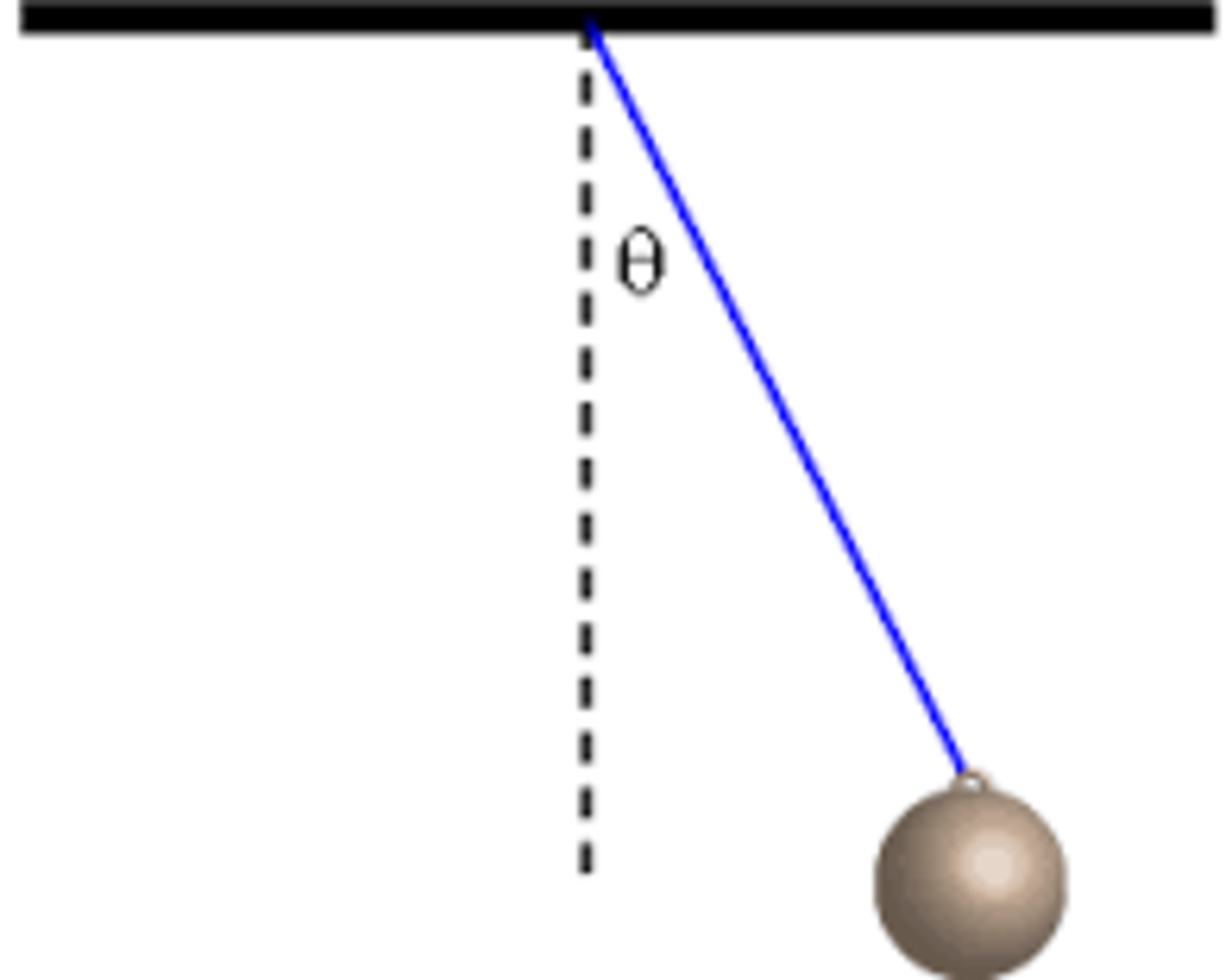Physics isn't fun without calculus!
The figure below shows a simple pendulum formed of a rod of negligible mass suspending at its lower end a particle (P).The pendulum is shifted by an angle from its stable equilibrium position in the vertical plane. Friction is not neglected.Assume that at the end of each oscillation of the system, the amplitude ( ) is divided by the same factor . Determine the number of the oscillations described by the oscillator during the time needed by the amplitude to drop from to .

This section requires Javascript.
You are seeing this because something didn't load right. We suggest you, (a) try
refreshing the page, (b) enabling javascript if it is disabled on your browser and,
finally, (c)
loading the
non-javascript version of this page
. We're sorry about the hassle.
t 0 : a m p l i t u d e θ 0 = 1 0 ∘ t = T : a m p l i t u d e θ 1 = b θ 0 t = 2 T : a m p l i t u d e θ 2 = b 2 θ 0 t = n T : a m p l i t u d e θ n = b n θ 0 θ n = 6 . 9 ∘ , θ 0 = 1 0 ∘ 6 . 9 = ( 1 . 0 2 5 ) n 1 0 , ln ( 1 . 0 2 5 ) n = l n ( 6 . 9 1 0 ) n = ln ( 1 . 0 2 5 ) ln ( 1 . 4 4 9 ) = 1 5 o s c i l l a t i o n s .